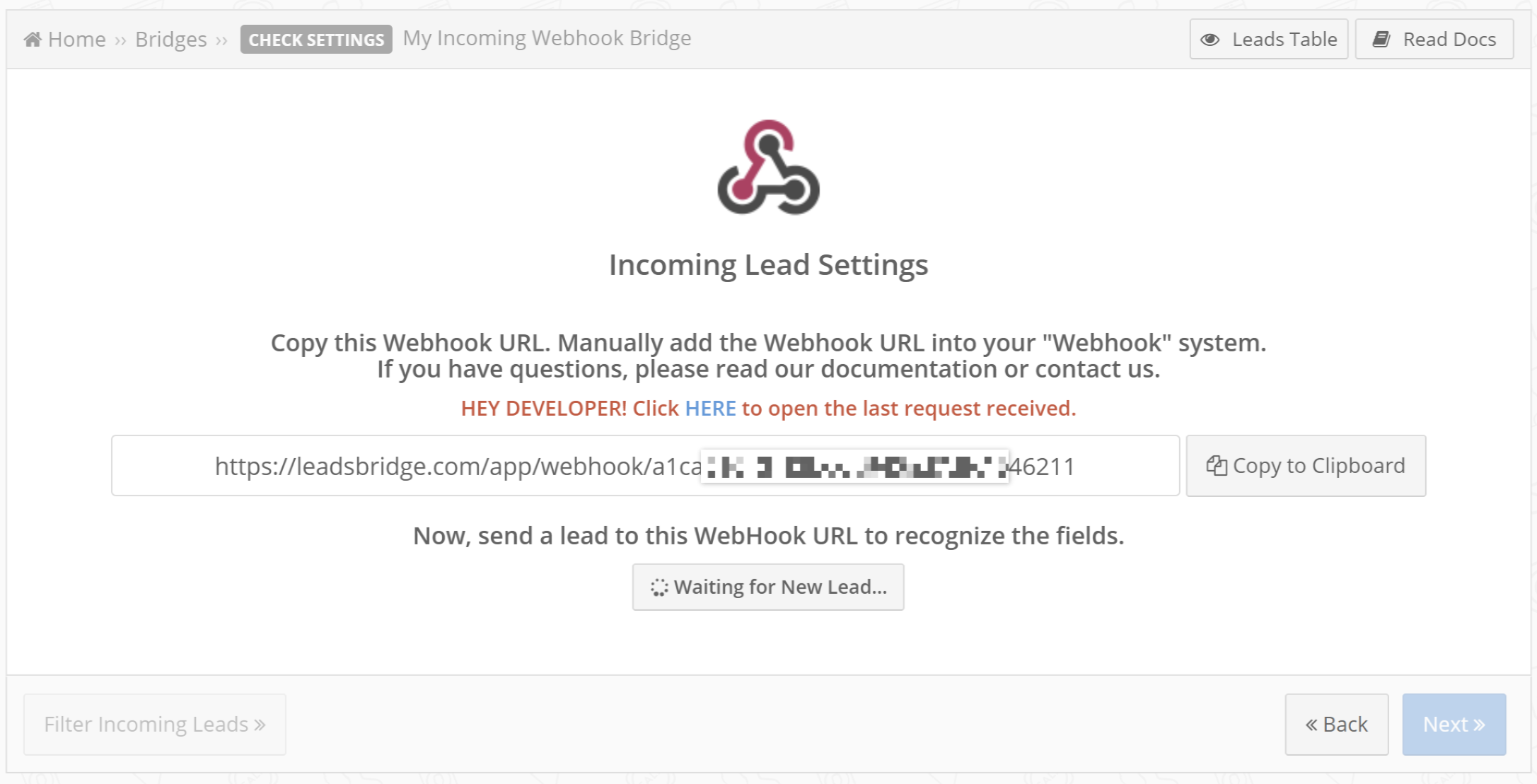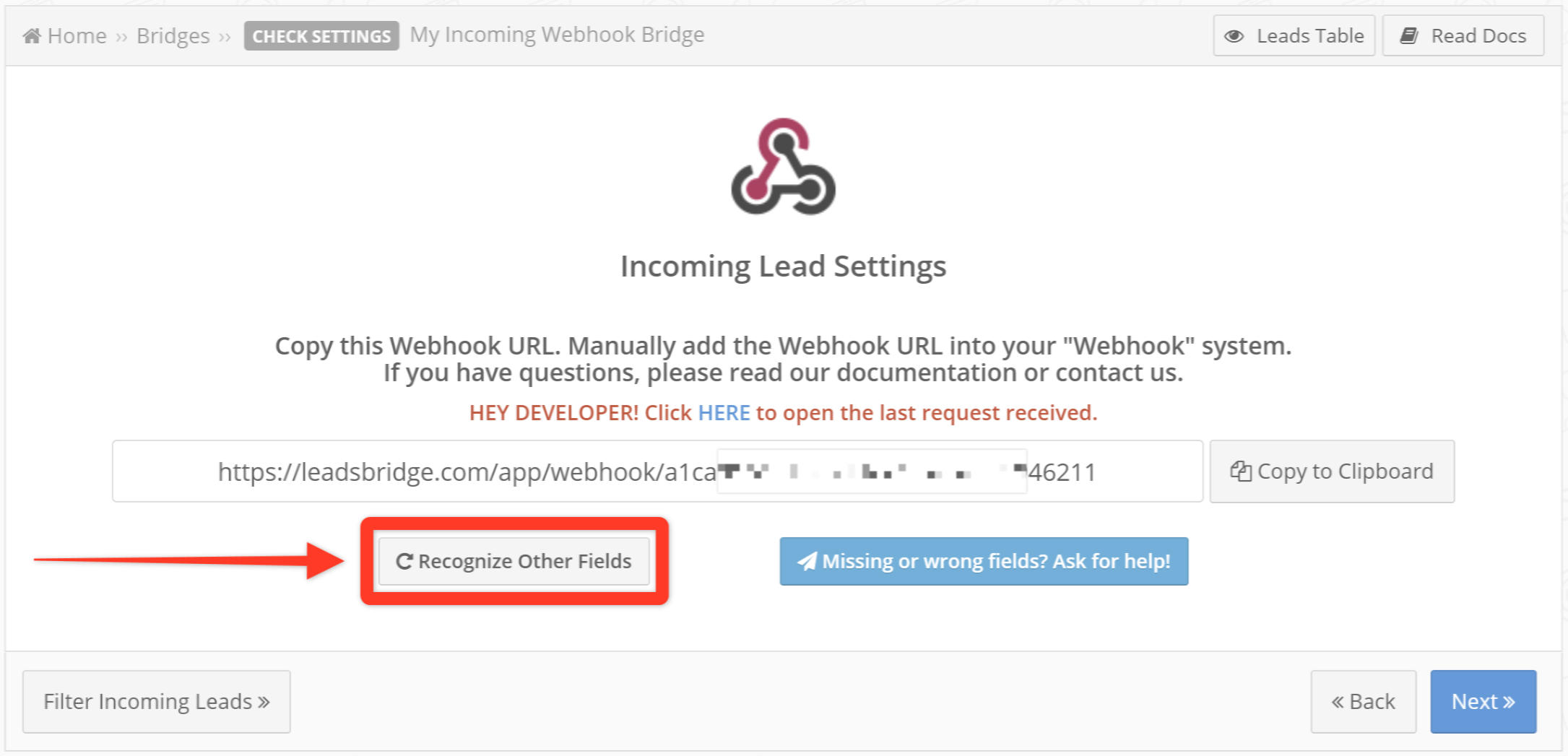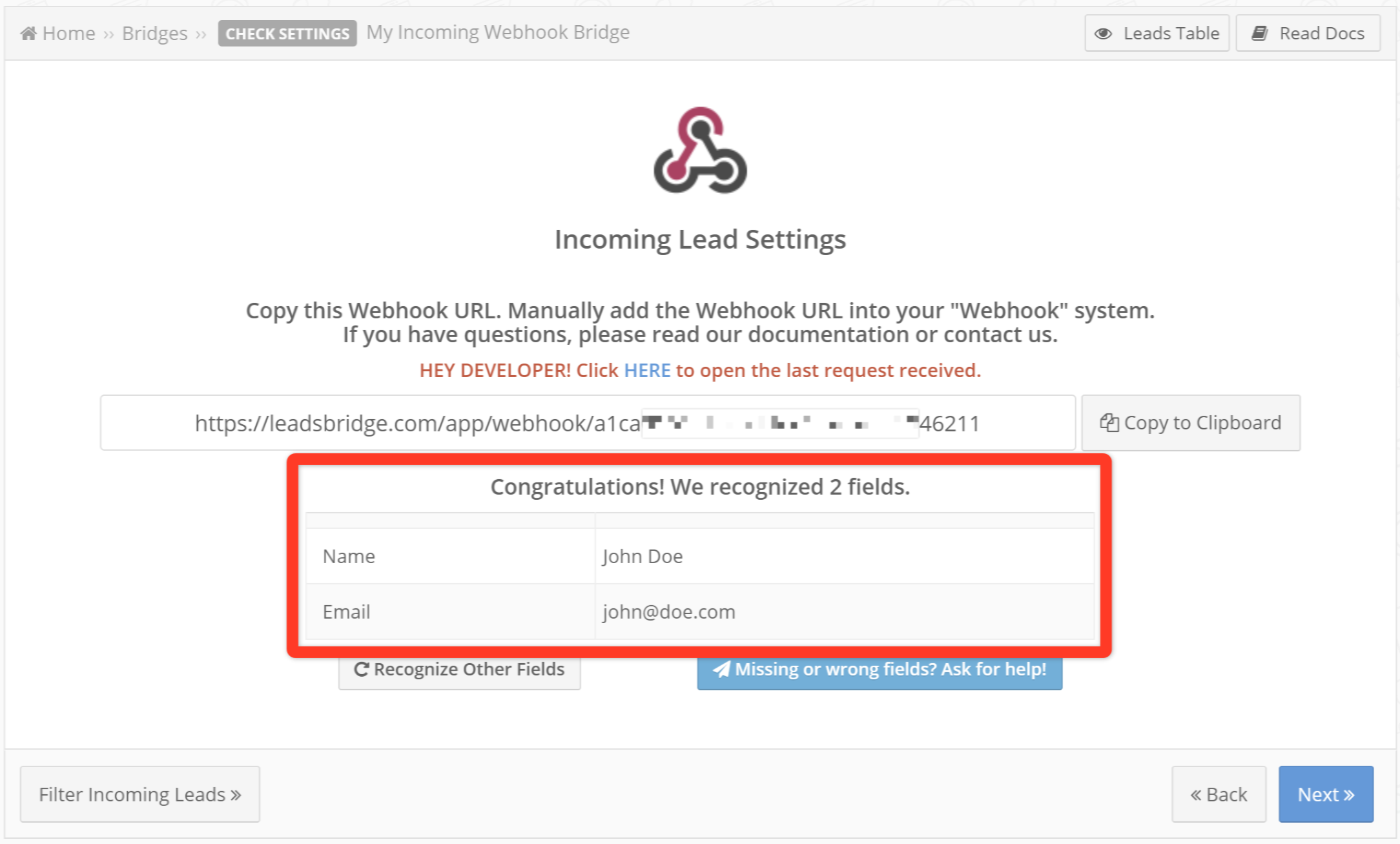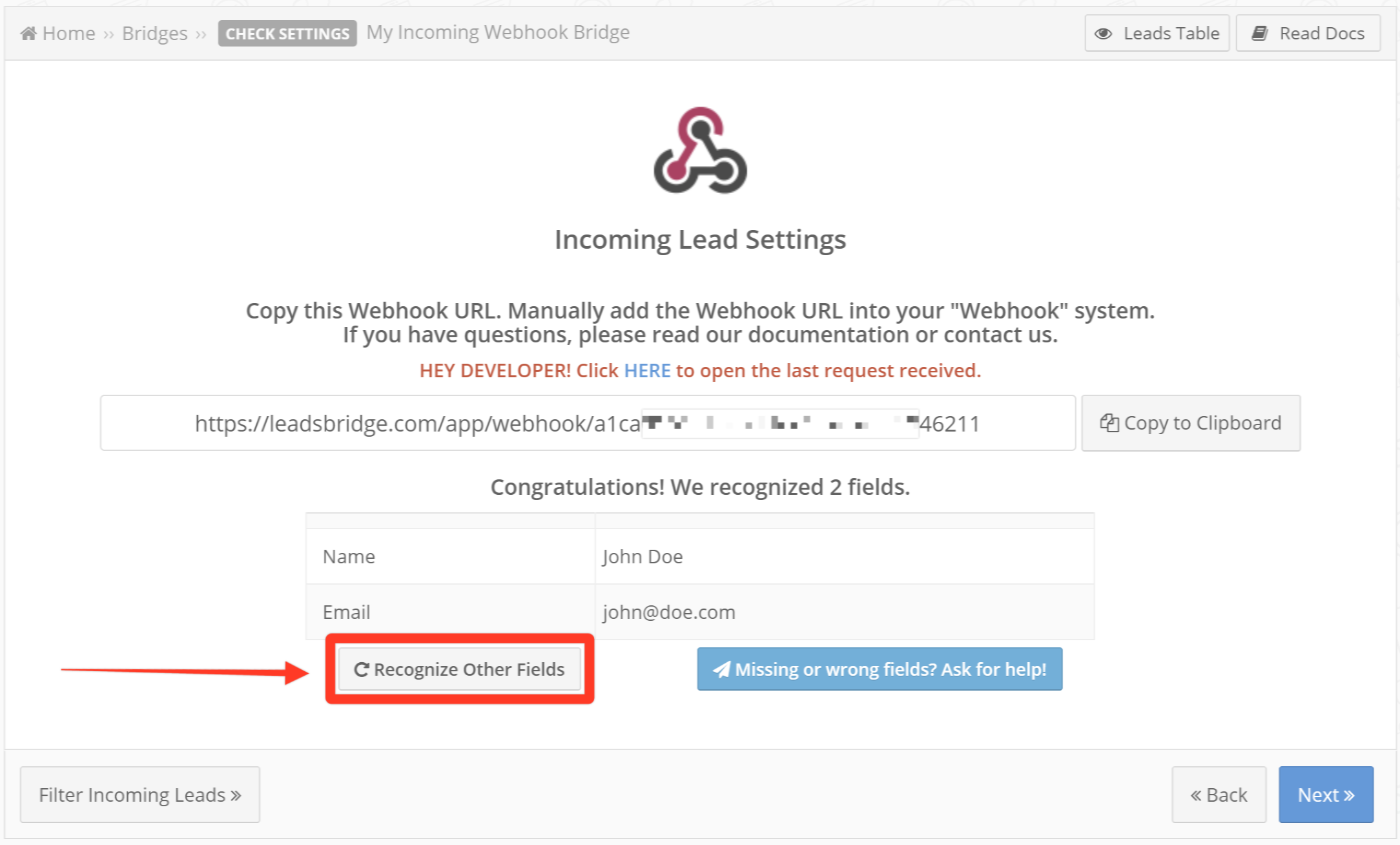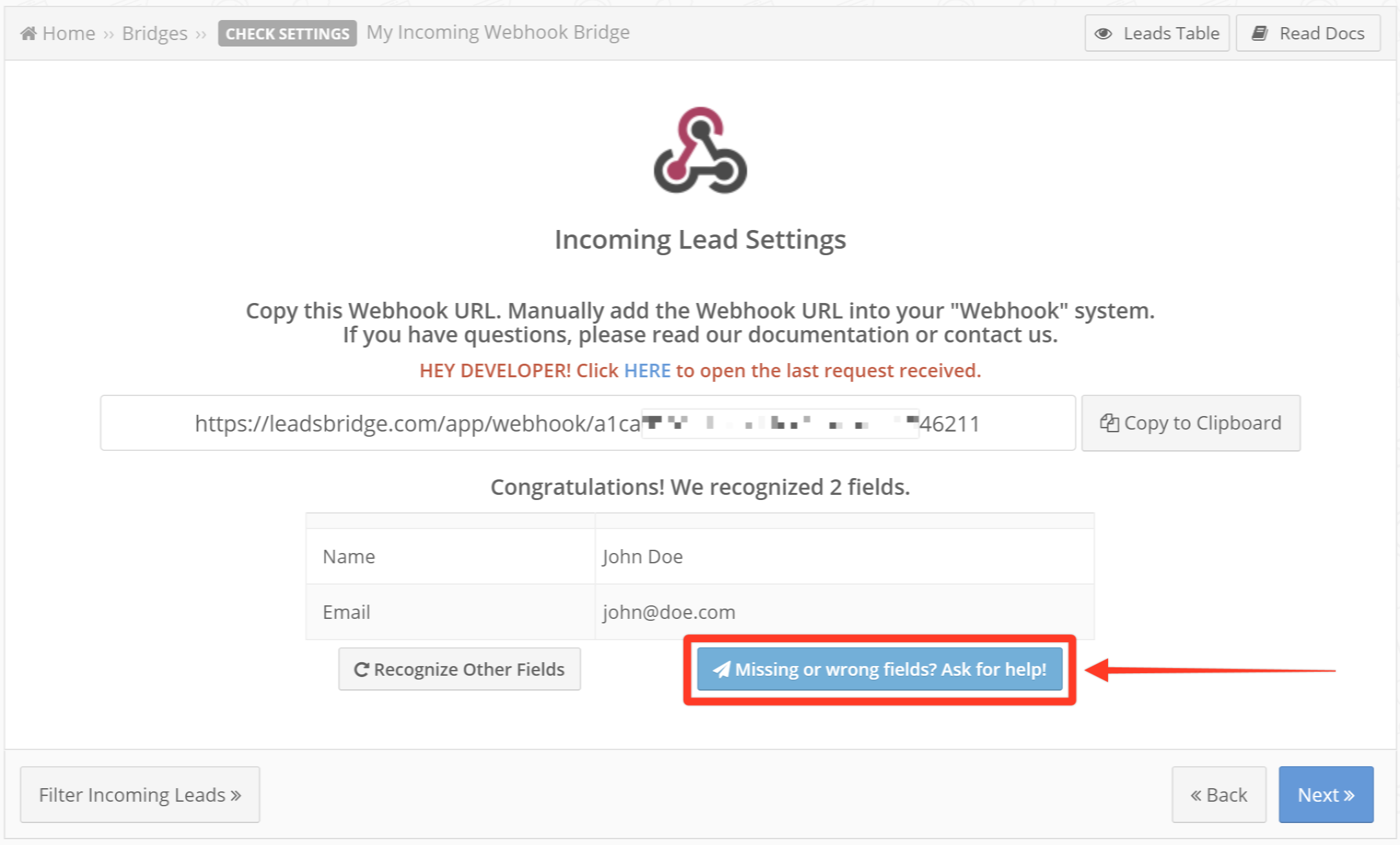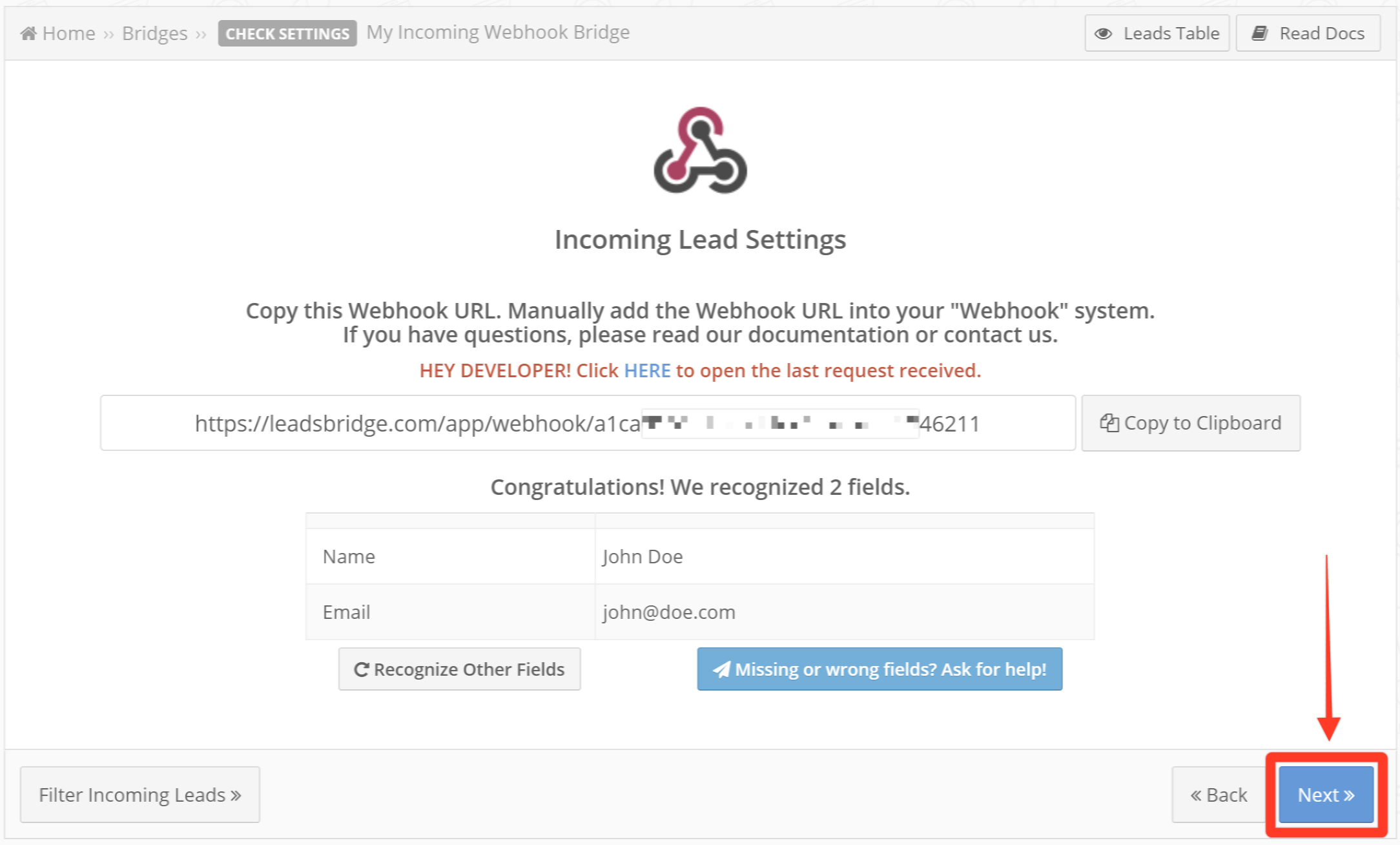Connect Webhook – Classic to LinkedIn Offline Conversions API with LeadsBridge
 →
→ 
This article is a simple guide on how to set up the bridge and connect Webhook - Classic to LinkedIn Offline Conversions API.
You can watch the video or follow the step-by-step below.
Video
Automatically sync the Audience with LeadsBridge
Learn how to create and automatically feed the LinkedIn Offline Conversions API with LeadsBridge. Some steps may vary upon each integration; if you have any doubt about the steps you should take for Webhook - Classic, please follow the written information below.
Manually create the Audience (LinkedIn)
You may always upload the CSV manually to create the Audience on LinkedIn. Please note, the LinkedIn Offline Conversions API will not be fed automatically as with the LeadsBridge solution.
Add the LinkedIn Ad Account first
If you have already connected your LinkedIn Ad Account, skip this part and head to the next step.
- Head over to the left sidebar and click on LinkedIn Suite.
- Click Members.
- Click on Add New to connect the Ad Account.
- A LinkedIn screen will ask you to login with the account you'd like to use.
- Authorize LeadsBridge to access to your LinkedIn Ad Account information.
- Once done, you'll be taken back to the LeadsBridge app.
How to set up the bridge step-by-step tutorial
Before you start
- Head over to the left sidebar and click on LinkedIn Suite.
- Click LinkedIn Offline Conversions API.
- You'll be taken to the LinkedIn Offline Conversions API section of your account.
- Click on Add New.
- You'll be taken to the first step of the bridge creation.
Step 1: Account destination
- Select the LinkedIn Ad Account you want to assign the LinkedIn Offline Conversions API.
- Select the Facebook Business Manager associated.
- Click Next.
Step 2: Choose your LinkedIn Offline Conversions API settings
- Pick an existing Custom Conversion or choose to create a new one from the drop-down.
- In case of a new one, enter the name for your LinkedIn Offline Conversions API (this will be visible inside your Business Manager).
- Select if you'd like to target Contacts or Companies as Type.
- Add some labels to identify your bridge later in LeadsBridge.
- Click Next.
Step 3: Setup your Webhook - Classic source
- Choose Webhook - Classic as source of your contacts.
- Select to use an existing integration or to create a new one.
- Click Next.
You may skip the integration part if your integration has been already configured.
Integrate Webhook - Classic with LeadsBridge
- Type in the name you'd like to call your integration to recognize it later.
- Enter Webhook to connect your Webhook - Classic with LeadsBridge.
- In order to correctly recognize incoming data when the Webhook Integration is used as Source you should do the following:
- Go into the Source step of your Incoming Webhook Bridge
- If the Bridge says Waiting for New Lead… means that is on Listening Mode and that any data you submit to the Webhook URL will be read by the LeadsBridge as soon as it arrives into the system
![]()
- You should leave this page open and submit data from the Source in which you have assigned the Webhook URL provided by LeadsBridge. In case you need to close the page and go back later to the Bridge configuration, make sure to set the Bridge on Listening Mode by clicking on the Recognize Other Fields button
![]()
- Once you’re able to submit data from your Source it should get automatically recognized by LeadsBridge
![]()
- In case you forgot to add some data, you should set the Bridge on Listening Mode by clicking on the Recognize Other Fields button and submit new data from your Source
![]()
- In case data is not being correctly recognized you may reach our support with the Missing or wrong fields? Ask for help! button
![]()
- Once all the data you want to map from your Source has been correctly recognized you should continue with your Bridge configuration by clicking on Next
![]()
- Click Next.
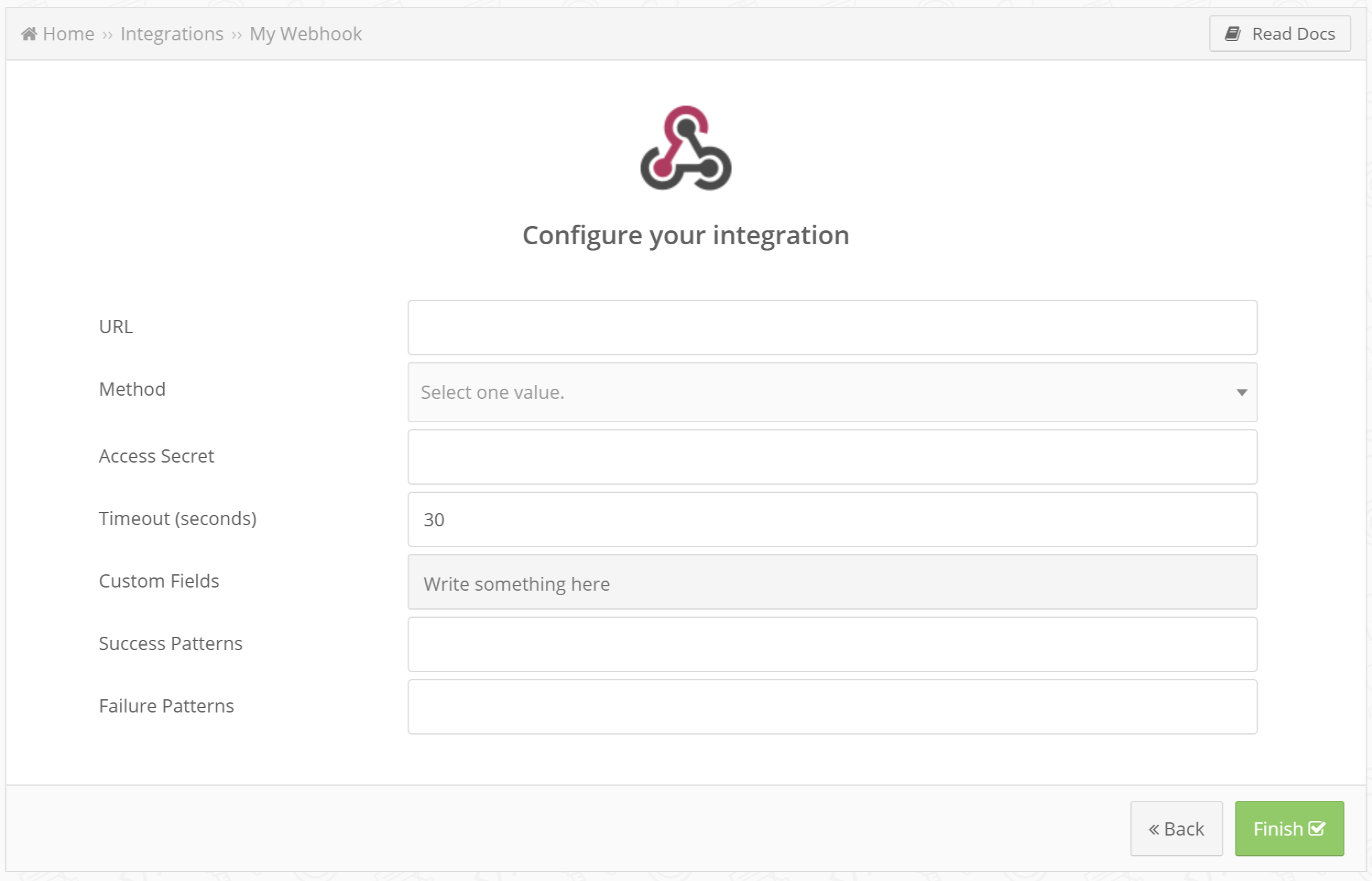
Contacts segmentation
- Select the segment you'd like to use as the source for your contacts.
- You may also add filter conditions by clicking the Source Filter button:
- Add conditions to filter contacts and tailor specific segments.
- Remember that source data will be processed only when all conditions added are met.
Fields Mapping
Here you can map your Webhook - Classic information with your destination fields.
You'll see a field name with the destination integration's logo at the top, this indicates the name of the field on LinkedIn Offline Conversions API.
Underneath there's a box where you may add the information you'd like to send.
- Check each of the LinkedIn Offline Conversions API fields available and match the data you wish to sync from Webhook - Classic.
- Map as many fields as possible to achieve higher performing data matching to people on LinkedIn.
- Please remember to specify these mandatory fields to create the Event Set:
- Event Name: the event type;
- Event Time: when the conversion occurred;
- Event Value: the value of the conversion, like the amount spent;
- Transaction Currency.
- Email and Phone can accept up to 3 values, thus allowing to create better-performing retargeting.
- Static values can be added only for Event Name, Transaction Currency, Country Code, Gender and U.S. State fields.
- You may also leave blank the box of a field's information you don't want to send through.
Custom Fields
Adding more information is simple and straightforward:
- Head over the "Would you like to add more information?" box at the bottom of the page.
- Select the field you'd like to add from the dropdown list.
- Click the Map this field button.
- The field will appear above.
- Add the desired information, as you did with the other ones.
Custom Data
Custom Data can be used for creating segments in your reporting or building custom audiences next.
Custom Data is not used for matching offline events to people on Facebook.
- Add the Custom Data custom field from the dropdown at the bottom.
- Select one or more information you'd like to add to your conversion inside the Custom Data field, for example the Category and the Location of a customer's order.
Once accomplished your desired outcome, click Next.
Audience Sources
Here you can Edit the source created, Delete it or Add Another Source to combine different sources into your LinkedIn Offline Conversions API.
If you'd like to add other source data, please click Add Another Source and repeat the Step 3 to setup your new source.
Once done, click Next and head to the last step.
Step 4: Summary
- Before proceeding, please check the information recap.
- Choose if you'd like to run a Simulation or you're ready to go Live.
- Simulation mode provides you with the opportunity to elaborate source data excluding the data sync process. The outcome is a report in order to verify the information processed.
- Live mode process source data and sync information with LinkedIn Offline Conversions API as the outcome. Activate this when you're ready to go live.
That's all! Congratulations.
Your bridge will now start the sync process to gather all the information. Once ready, it will be synced and updated automatically.
Related Articles
- Getting Started with the Conversions Sync
- Offline Conversions Sync step by step guide
- Offline Conversions FAQ's
If you have any other questions, or need help to configure your bridge from Webhook - Classic to LinkedIn Offline Conversions API with LeadsBridge, do not hesitate to contact our Support!



